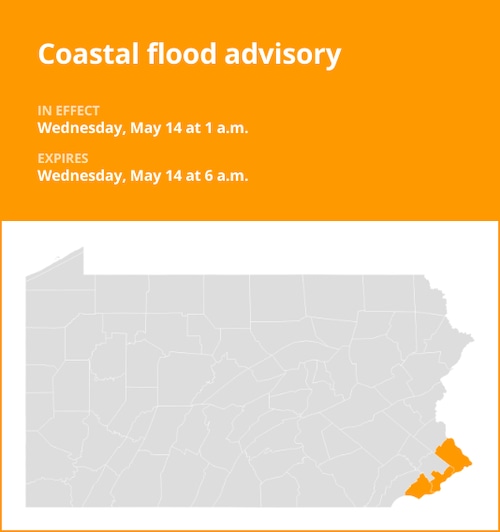Understanding Coastal Flood Advisories: What They Mean and How to Stay Safe
Staying informed about weather alerts can help save lives and minimize property damage. One such critical alert is the coastal flood advisory. Understanding what this advisory means and knowing how to respond can make all the difference, especially for those living near shorelines and tidal waterways.

What Is a Coastal Flood Advisory?
A coastal flood advisory is issued by the National Weather Service when minor flooding along the coast is expected. This typically means inundation of up to one foot above ground level in low-lying areas near shores and tidal waterways. According to recent alerts, affected communities should watch for flooding of the most vulnerable roads and possible road closures. Minor flooding could cause significant inconvenience and, if not addressed with caution, may threaten life and property.
For a detailed example, check out the coastal flood advisory issued for Southeast Pennsylvania, which outlines how high tides can cause temporary flooding along rivers and tidal sections in specific counties.
How Does a Coastal Flood Advisory Differ from Other Flood Alerts?
It's easy to confuse a coastal flood advisory with other weather alerts, but the distinctions are important:
- Coastal Flood Advisory: Minor flooding is expected, but it is not severe enough to prompt a warning. Inconvenience is likely.
- Flood Warning: Flooding is imminent or already occurring. Serious action is required.
- Flood Watch: Conditions are favorable for flooding, meaning residents should stay alert and prepared.
You can find a comprehensive breakdown in the coastal flood advisory for Salem County, which explains how advisories fit into the wider array of flood alerts.
Safety Precautions During a Coastal Flood Advisory
When a coastal flood advisory is announced, preparation and vigilance are crucial. Here are some high-impact safety tips based on expert weather service recommendations:
- Move to Higher Ground: If you live in a low-lying, flood-prone area, relocate to higher ground until the advisory is lifted.
- Heed Evacuation Orders: Always follow instructions from local authorities. Secure your home before leaving.
- Disconnect Utilities: Unplug electrical appliances and, if safe, turn off utilities to cut down the risk of electrical hazards.
- Avoid Flooded Areas: Steer clear of basements and rooms with water near electrical outlets or cords. Six inches of swift water can knock a person off their feet, and a foot of water can sweep away cars.
- Don’t Drive Through Floodwaters: Never attempt to drive on flooded roads. The depth and force of the water can be deceptive and dangerous.
If you become trapped by rising waters, head to the highest point possible and call emergency services.
Real-World Examples of Coastal Flood Advisories
Recent advisories for communities such as Southeast Pennsylvania and Salem County, New Jersey, illustrate how these alerts play out. Vulnerable roads may close, and people are urged to plan ahead. Read more about the Salem County coastal flood advisory and its impacts for local context.
For tips on how other regional advisories have been handled and best practices to follow, see the relevant Pennsylvania weather alert coverage.
Summary: Stay Alert and Prepared
A coastal flood advisory signals that minor but potentially disruptive flooding is expected along the coast. While it is less severe than a flood warning, it should never be ignored. By understanding the alerts, following expert advice, and staying tuned to local weather services, you can better protect yourself and your property when high tides and storms threaten coastal areas.